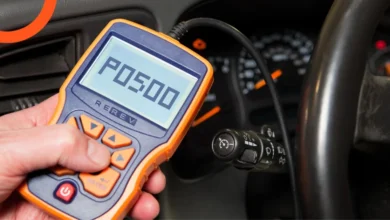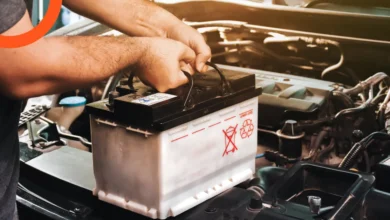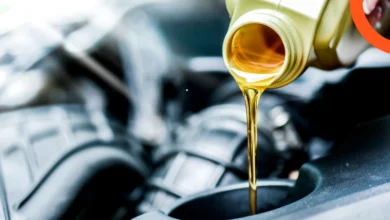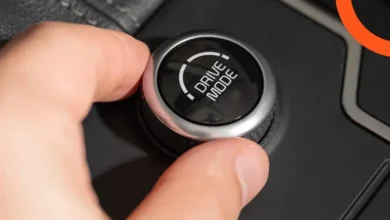Fuel Saving Methods: Gasoline and Diesel
With the continuous rise in fuel prices, whether gasoline or diesel, there are many ways to save fuel. These methods play a significant role in improving engine efficiency and reducing fuel consumption. In the following lines, we will review ways to save fuel and diesel, pointing out some incorrect practices that multiply fuel consumption and tips to avoid consumption as much as possible.
Ways to Save on Gasoline

There are a number of simple habits and methods that can make a significant difference in gasoline consumption efficiency. Here are the most important ways to help you save gasoline in a practical and noticeable manner:
Gently Pressing the Gas Pedal
Sudden acceleration or aggressive driving results in excessive fuel consumption. Driving smoothly and stopping gently within the city helps significantly reduce consumption and maintains the vehicle.
Regularly Checking Tire Pressure
Tires with pressure lower than the required level increase road resistance, forcing the engine to exert more effort and thus consume more fuel. Regular checks ensure optimal performance and save gasoline.
Reducing Excess Weight
Every extra kilogram in the car increases the load on the engine and leads to higher fuel expenditure. Getting rid of unnecessary items, especially in the trunk, is an effective step for savings.
Regularly Replacing the Air Filter
A dirty air filter hinders the engine’s breathing and reduces its efficiency, leading to increased fuel consumption. Replacing it with a clean filter improves performance and reduces expenditure.
Turning Off the Car During Long Stops
Keeping the engine running while waiting consumes fuel unnecessarily. If you stop for more than two minutes, it’s best to shut off the engine to reduce gasoline waste.
Using Cruise Control on Long Roads
Cruise control maintains a steady speed and reduces repeated acceleration, improving gasoline consumption efficiency, especially when traveling or driving on highways.
Using the Right Engine Oil
Using the wrong or old oil increases friction between engine parts, leading to higher fuel consumption. Choosing the recommended oil from the manufacturer is essential for better performance and noticeable savings.
Constantly Monitoring Fuel Consumption
Tracking your car’s fuel efficiency helps you discover any problems early, such as issues with spark plugs or fuel filters, preventing worsening and saving costs in the long run.
Ways to Save on Diesel

Diesel is one of the most common fuels used in heavy engines, trucks, and generators. With rising fuel costs, there is an increasing need to adopt effective practices that help reduce diesel consumption without impacting performance. Here are some key methods:
Maintaining the Proper Cooling Temperature
The temperature of the coolant plays a fundamental role in engine performance. Abnormal high or low temperatures lead to engine stress and increased fuel consumption. It’s essential to ensure the cooling system’s efficiency and use the proper coolant fluids and fill them according to specifications.
Avoiding Unnecessary Engine Running
Leaving the engine running for long periods without actual use leads to significant diesel waste, especially during low-load conditions. The engine should be turned off during long stops or only started when needed to reduce unnecessary consumption.
Regular Maintenance of Engine Heads and Parts
Replacing damaged or worn cylinder heads and seats in a timely manner helps maintain the efficiency of fuel combustion within the engine. Regular maintenance ensures no pressure or fuel leaks and reduces waste resulting from poor performance.
Organizing Startup and Maintenance Operations
Ensuring that warm-up operations are correctly conducted at the start of engine operation, along with regular checks for fuel quality and filter cleanliness, helps reduce diesel consumption and improve operational efficiency. Additionally, adhering to preventive maintenance schedules extends the engine’s lifespan and saves fuel.
Addressing Valve and Injection System Issues
Any malfunction in the valve system or injection pumps leads to incomplete combustion of diesel, raising consumption. It’s essential to ensure the accuracy of injection timing and periodically adjust valve operation to avoid energy loss from fuel leaks or blockages.
ECO Fuel Saving System

The ECO system is one of the important innovations that help achieve a smart balance between performance and fuel consumption. This system stands for “Economic Driving Mode,” a feature now available in many modern cars, especially hybrids, aimed at reducing gasoline consumption and promoting environmentally friendly driving styles. The ECO system represents a smart step towards more economical and environmentally-friendly driving and gives drivers the opportunity to adopt a more conscious driving behavior without sacrificing comfort or safety.
How It Works
The ECO system alters engine and transmission response so that fuel consumption is reduced when driving at low or moderate speeds on straight roads. When the system is activated with the push of a button, the car’s computer sends signals to the engine to reduce the amount of fuel burned, which helps decrease emissions and improve energy efficiency. In ideal conditions, the system can achieve fuel savings of up to 20%, making it an ideal choice for city driving or during traffic jams. However, it’s important to know that the system is not suitable for all conditions, such as driving in hilly areas or at high speeds, where the engine requires more torque that this economic mode does not provide.
Conditions Where ECO Should Not Be Used
In some cases and conditions, using this system may not be suitable and may even reduce engine performance or affect driving comfort and safety. Here are the main situations where it’s not advisable to activate the ECO system:
Driving at High Speeds
At high speeds, the engine requires higher performance and faster response for shifting, which goes against the function of the ECO system that reduces the engine’s torque and makes its response slower. Continuing to use ECO in this case may strain the engine and could potentially damage some of its components in the long run.
Driving Uphill on Hilly Roads
Climbing hills requires additional power and torque, while the ECO system does the opposite by reducing torque. Using it in such cases places an unjustifiable burden on the engine, which may negatively affect its performance.
Hot Weather
In hot conditions, running the air conditioning is essential, which requires more energy from the engine. Activating the ECO system in this situation may weaken cooling inside the cabin due to reduced engine performance, which decreases comfort and affects the effectiveness of the cooling system.
Driving at Night
Driving at night requires turning on systems like headlights and air conditioning, which rely on engine torque. When activating ECO, you may notice reduced headlight brightness due to decreased electrical power output, which affects visibility and poses a safety risk while driving at night.
Incorrect Practices That Increase Fuel Consumption
Despite the advancement of fuel-saving technologies in modern vehicles, driver behavior still plays a crucial role in determining gasoline consumption efficiency. By being aware of these common errors, effective steps can be taken to reduce consumption, including:
Opening Windows While Driving
When windows are opened while driving, especially at high speeds, air resistance against the car increases, forcing the engine to work harder to maintain speed, thereby raising fuel consumption rates.
Driving on Rough Terrain
Unpaved roads and rough terrain compel the vehicle to exert more effort to turn the wheels, which increases pressure on the engine, leading to greater fuel consumption.
Frequent Short Trips
Running the car for short, multiple trips leads to higher fuel consumption compared to consolidating these trips into one single journey, as the engine requires additional fuel consumption each time it starts from zero.
Excess Load
The heavier the vehicle, the more energy is needed to move it. Keeping heavy or unnecessary items in the car, especially in the trunk, significantly increases gasoline consumption over the long term.
Using Heating Before Starting to Drive
Running the heater while the car is still stationary consumes additional engine energy without any real benefit. It is preferable to delay starting the heating until the vehicle is moving, which reduces pressure on the fuel system.
Getting Caught in Traffic Jams
Frequent stopping and starting in traffic, especially during peak hours, leads to inefficient fuel consumption. It is advisable to avoid busy roads if possible or to use navigation apps to select faster routes.
Frequently Asked Questions
What is the best driving style for saving fuel?
The best approach is to drive gently without sudden acceleration or sharp braking, while maintaining a steady speed as much as possible. It is preferable to use cruise control when driving on highways to reduce fuel consumption.
Does running the AC increase fuel consumption?
Yes, running the air conditioning system can increase fuel consumption by up to 10%, especially at low speeds or in traffic.
Does tire pressure affect fuel consumption?
Absolutely, improper tire pressure, particularly if below the recommended level, increases rolling resistance, leading to higher fuel consumption. Therefore, it’s important to regularly check tire pressure.
Does leaving the engine running while stopped consume fuel?
Yes, keeping the engine running during a stop leads to fuel consumption without any practical benefit. It’s better to turn off the engine if the stop is for an extended period.
Does the ECO system weaken the car’s torque?
Yes, when the ECO system is activated, the driver may notice a slight decrease in the car’s torque, which is normal as the system reduces fuel consumption by decreasing engine response to improve efficiency.
Tips for Saving Fuel for Gasoline and Diesel

Saving on fuel consumption depends on two main factors: regular vehicle maintenance and adopting a smart and balanced driving behavior. Combining these two aspects can make a tangible difference in the number of kilometers driven per liter of fuel. Here are some of the best tips that can be followed to save fuel for both gasoline and diesel:
Using the Right Oil
Selecting the recommended engine oil grade from the manufacturer can help improve engine efficiency and reduce fuel consumption by up to 2%. You can find oil information in the owner’s manual, with the possibility of varying grades based on driving conditions.
Maintaining Proper Tire Air Pressure
Keeping adequate air pressure in tires can save up to 3.3% in fuel consumption. Properly inflated tires reduce rolling resistance and provide safer and more efficient performance.
Keeping the Engine Properly Tuned
A poorly tuned engine can waste a lot of fuel, and maintaining the sensor system – especially the oxygen sensor – can improve fuel consumption efficiency by as much as 40% in some cases.
Regular Maintenance
Paying attention to vehicle components such as fuel filters, spark plugs, and alignment enhances overall vehicle performance and can reduce fuel consumption by up to 25%.
Combining Trips
Driving with a cold engine consumes more fuel. It’s better to consolidate daily tasks into one trip instead of repeating short trips, reducing gasoline consumption.
Driving Calmly and Steadily
Excessive speed, sudden acceleration, and sharp braking can increase fuel consumption by up to 33% on highways. Utilizing a soft driving style saves fuel and increases the vehicle’s lifespan.
Monitoring Speed
Fuel consumption efficiency significantly decreases when exceeding a speed of 100 km/h. Maintaining a moderate speed is one of the easiest and quickest ways to reduce fuel expenditure.
Removing Excess Weight
Every additional 45 kg in the car can lead to a 2% increase in fuel consumption. Keep the cabin and trunk free from unnecessary items.
Reducing Idling
Running the vehicle in idle for long periods wastes fuel without any benefit. If you expect a long stop, turn off the engine to save gasoline.
Using Cruise Control
On highways, the speed control system helps maintain a steady speed and avoids repeated acceleration, contributing to less fuel consumption.
Using Higher Gears When Driving
Driving the car using higher gears at the right time reduces engine revolutions and therefore reduces fuel consumption as well as engine wear.
In conclusion, fuel savings start from daily driving habits and regular vehicle maintenance. Every simple step you take can make a difference in gasoline or diesel consumption and reduce costs in the long run. By following tips and guidelines and avoiding incorrect practices, fuel savings can become more effective and efficient.





